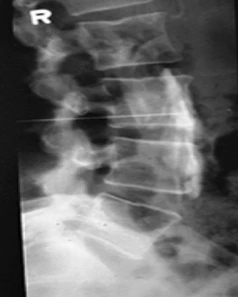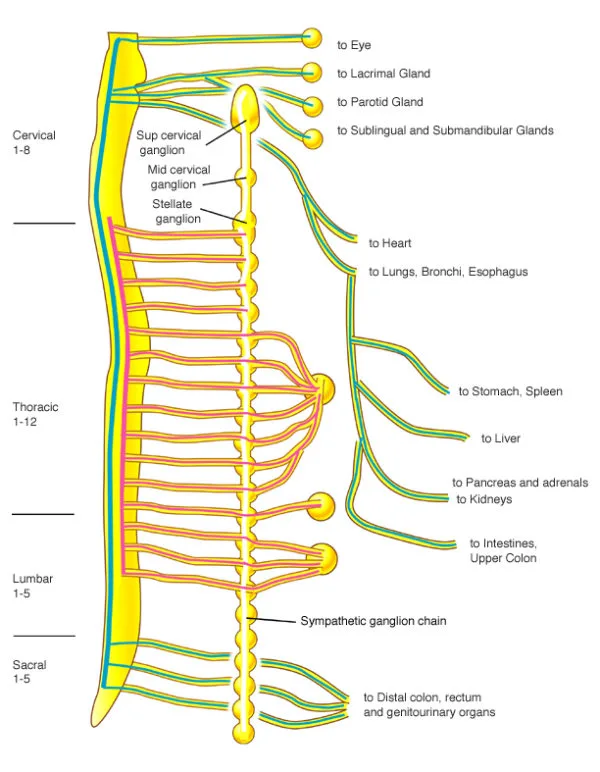Lumbar Sympathetic Nerve Block Injection
Overview
- Severe pain (claudication and rest pain)
- Decreased pulse in the limb
- Abnormal skin temperature
- Abnormal skin color
- Non healing ulcers
- Other trophic changes
Common types of PVD
- Arteriosclerosis
- Diabetic arteriosclerosis
- Raynaud’s disease
- Buerger’s disease

What Is The Purpose Of A Lumbar Sympathetic Nerve Block?


Get Relief With A Lumbar Sympathetic Nerve Block Injection
What does the procedure involve?
The Lumbar Sympathetic Block is an outpatient procedure, usually done in the Operating Room or a Special Procedure Room. For your safety and comfort, you will be connected to monitoring equipment (EKG monitor, blood pressure cuff, and a blood-oxygen monitoring device), and positioned on your stomach. The doctor or nurse may start an intravenous line and give some medicine to help you relax. Your back is cleansed with an antiseptic soap after which the doctor injects numbing medicine deep into your skin and tissue. This will cause a burning sensation for a few seconds. After the numbing medicine takes effect, the doctor will insert a another needle and, with the assistance of a special X-ray machine called a fluoroscope, inject a radiopaque dye (contrast solution) to ensure the needle is in proper position. With the needle in position, a small mixture of numbing medicine (anesthetic) and anti-inflammatory medicine (steroid) is injected. After the procedure, we ask that you remain at the Clinic until the doctor feels you are ready to leave.
Can I go to sleep for the procedure?
How long will the procedure take?
What should I do before the procedure?
- Since you will be receiving medication, it is recommended that you do not eat within four or five hours before the procedure. If you are a diabetic, be sure to discuss your eating and medication schedule with your doctor.
- You may need to stop taking certain medications several days before the procedure. Please remind the doctor of all prescription and over-the-counter medications you take, including herbal and vitamin supplements. The doctor will tell you if and when you need to discontinue the medications.
- It is very important to tell the doctor if you have asthma, had an allergic reaction (i.e. hives, itchiness, difficulty breathing, any treatment which required hospitalization) to the injected dye for a previous radiology exam (CT scan, angiogram, etc) or if you have had an allergic reaction to shellfish (shrimp, scallops, lobster, crab). The doctor may prescribe some medications for you to take before having the procedure.
- Tell the doctor if you develop a cold, fever, or flu symptoms before your scheduled appointment.
Is there anything special that I need do after the procedure?
- You may experience some weakness and/or numbness in your legs a few hours after the procedure. If so, do not engage in any activities that require lifting, balance and coordination.
- Drink plenty of clear liquids after the procedure to help remove the dye from the kidneys.
- Do not drive for the remainder of the day. Please have an adult drive you home or accompany you in a taxi or other public transportation.
- Depending on how you feel, you may resume normal activities and return to work the following day.
- If the doctor prescribes physical therapy, it is very important that you continue with the physical therapy program.
- Although you may feel much better immediately after the injection (due to the numbing medicine), there is a possibility your pain may return within a few hours. It may take a few days for the steroid medication to start working.
- You must participate in physical therapy, in order to get long-term control of symptoms.
What are the risks of a Lumbar Sympathetic Nerve Block?
- Puncture of the abdominal organs or the lungs
- Numbness of an legs that may last for hours
- Temporary weakness or numbness from the neck down
- Allergic reaction to the medication
- Nerve damage
- Bruising at the injection site
- Infection at the injection site
- Injection of medication into a blood vessel with possibility of stroke or seizure or sudden cardiac arrest
- Post-injection flare (nerve root irritation with pain several hours after treatment, which may last days or weeks)
- Depigmentation (a whitening of the skin)
- Local fat atrophy (thinning of the skin)
- Destruction of a motor or sensory nerve in the path of the needle
- Bleeding, nerve injury, organ injury and death are rare but possible
